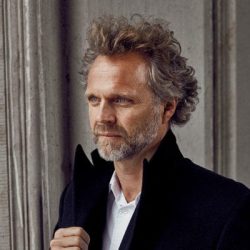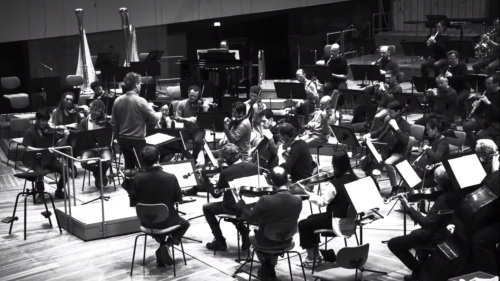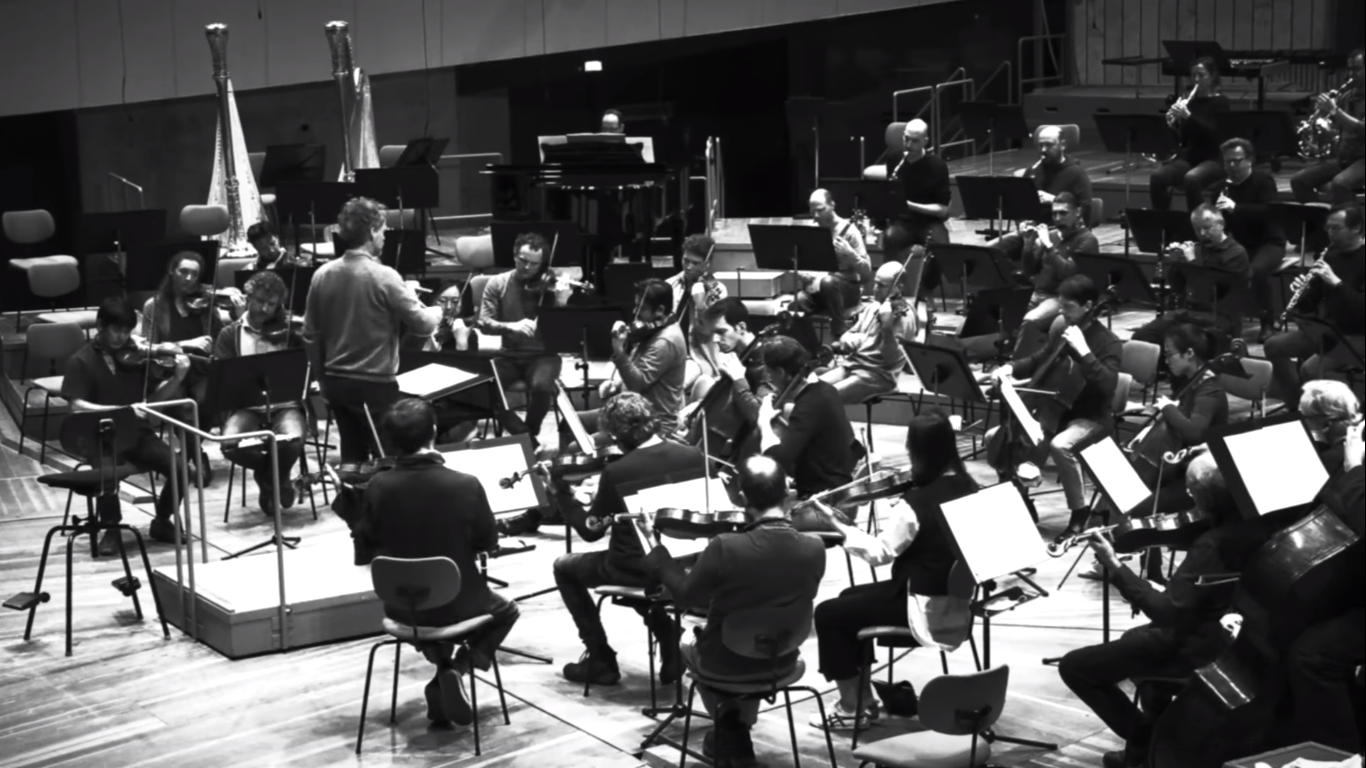 Germany ‘The Golden Twenties’ – Prokofiev, Sibelius, Weill: Berlin Philharmonic / Thomas Søndergård (conductor). Performed in the Philharmonie Berlin and streamed on the Berlin Philharmonic’s Digital Concert Hall, 20.2.2021. (GT)
Germany ‘The Golden Twenties’ – Prokofiev, Sibelius, Weill: Berlin Philharmonic / Thomas Søndergård (conductor). Performed in the Philharmonie Berlin and streamed on the Berlin Philharmonic’s Digital Concert Hall, 20.2.2021. (GT)

Prokofiev – The Love for Three Oranges: Suite, Op.33 bis
Sibelius – Symphony No.6 in D minor, Op.104
Weill – The Rise and Fall of the City of Mahoganny: Suite (arrangement by Wilhelm Brückner-Rüggerberg)
The third concert of this online festival ‘The Golden Twenties’ (click here) in Berlin continues to focus on the music of Kurt Weill and juxtaposing his theatre suite with contemporary works by quite different composers from Europe. Thomas Søndergård was making his debut here with the Berlin Philharmonic, of course he has become a popular conductor in both his native Denmark and with UK audiences in the last decade for his excellent work firstly in Cardiff, and now in Scotland with the BBC Welsh National Orchestra and the Royal Scottish National Orchestra, respectively. Last year the release of Prokofiev’s Fifth Symphony with his present orchestra, the RSNO, was well received which was a good portent for the opening piece based on Prokofiev’s 1921 commission from Chicago for an operatic fairy-tale.

In the opening – The Ridicules, the loud burst from the brass was in typical Prokofiev style with furious rhythms from the strings, and dazzling playing from the clarinet of Alexander Bader and Michael Hasel on the flute in a melodious passage before shifting to a sinister march. In The Magician Tchelio and Fata Morgana Play Cards, opened with a dreamy tune and again a motoric pace with a rocking idea in the bassoons running to an orchestral jocularity, all brilliantly brought out by the conductor. In the famous March, Wieland Wenzel on the timpani opened with a mischievous idea, backed by the xylophone and the whole orchestra; it was clear how much Søndergård loves and feels this extraordinarily exciting dynamic music. In the Scherzo, there was some delightful phrasing from the wind with Stefan Dohr on French horn and Stefan Schweigert excellent on bassoon. The Prince and the Princesses opened with a delightful idea from the flute of Hasel and followed on solo viola by Micha Afkham with a startling idea from the whole orchestra before the music slowly dies away. In Flight, there was some amazingly swift playing from the violins, and a reprise of music from The Ridicules and piccolo in a merry upbeat finale.
Following the magnificence of the Fifth Symphony and following five years of labour on his next one, Sibelius surprised his audiences with the Sixth Symphony when it was premiered in 1923 for its contrast between modernism and classicism. This was the first sign that the composer was slowing down and beginning to withdraw from composition: after the Seventh he would be largely silent for thirty years. Perhaps the tragedy of the Great War changed him irrevocably. Despite being set in D minor, the first three movements adopt the Dorian mode, while the work ends in the Aeolian mode. In the opening Allegro molto moderato, the strings were exquisite in a rather fragile wistful idea, while the oboes and flutes introduced a charming idiom evoking nature; almost like the mist lifting from a forest lake in northern Finland. There emerged in the woodwind and strings a gloriously energised idea that was quickly taken over by the brass. In the Allegretto moderato, the timpani opened on a sombre note with the woodwind presenting enigmatic harmonies as if portraying a desolate Nordic landscape. In the Poco vivace, we heard chortling flutes with a more upbeat mood, and a wonderful theme opening up tentatively before the dramatic close. In the Allegro molto a beautiful idea on the woodwind evoked a return to nature with bird-like calls, the optimism was shared by the strings and a building tempo, it is evident from his movements and facial expressions how much Thomas Søndergård loves this music. The drama and excitement on the brass, with fresh ideas and harmonies emerging and as quickly disappearing until at last, the strings reprised the opening idea before slowly dying away into silence.
During the interval, the singer Dagmar Manzel told of the astonishing decade of twenties Berlin which began with the depression arising from Germany’s defeat in the Great War through to the growing economic successes set against terrible poverty, the rise of the Nazis and street battles with the Communists, and ultimately the Great Depression. Amazingly, the city boasted three opera houses, forty theatres, and twenty large concert halls, and there was a rapid rise in entertainment with Berlin becoming a European centre for the arts led by the enlightened city council, all of which changed after the demise of the Weimar Republic. At the beginning of the decade Kurt Weill was just a student, yet by 1930, he had composed some of his finest compositions. Weill’s stage work The Rise and Fall of the City of Mahogany followed quickly upon his brilliantly successful The Threepenny Opera, which was also from a collaboration with his colleague Bertolt Brecht. Initially, the stage work was to be premiered at Baden Baden in 1927, however, it did not receive its first performance until 1930 in Leipzig, and of course, after 1933 it was banned by the Nazis. For several decades, it was neglected, and only in the 1960s did it receive significant performances.
As the First Concertmaster of the Berlin Philharmonic, Noah Bendix-Balgley, explained in his pre-concert introduction, the opera is based on the story of three fugitives who set up a pleasure oasis where men would come to seek deliverance from their hedonist desires through gambling, prostitution and drinking. They commit crimes there, and the opera closes with a typhoon destroying the city of Mahoganny. The collaboration between Weill and Brecht was criticised for being an exposé of capitalism, and no less for intermingling the rhythm of jazz and cabaret with classical musical forms. Writing to Universal Edition publishers, Weill explained his thoughts on writing the opera. ‘It is beyond question that at present a completely new kind of stage work is emerging, which addresses itself to a different and incomparably larger audience, and whose effect will proliferate in completely unaccustomed ways. This movement – whose most powerful proponent, in the field of theatre, is Brecht – has until now never encroached upon opera, even though music is one of its essential elements. The piece that we plan to write will not exploit contemporary events that will be obsolete in a year’s time but give our own time a definitive form.’
In more recent years, it has been staged to different degrees of success at the Metropolitan Opera in New York, at Scottish Opera, and Covent Garden. The suite here was arranged by the conductor Wilhelm Brückner-Rüggerberg in 1968 and superbly presents the music and idiom of the time in twenties Berlin. The opening Allegro guisto embraced a brisk idea, taken up through the orchestra followed by the Moderato assai with the flute, trombone, banjo, and a motoric idea on the strings, invoking the famous ‘Banjo Song’. After which the saxophone played a lazy jazz dance, while a more jocular theme introduced lively jazz rhythms, leading to another attractive idea on the two saxophones. In the Lento, a solo saxophone was accompanied mellifluously by the solo violin of Dashin Hashimoto. The Molto vivace had muted trombones and piccolo flutes all upbeat with the mood switching rapidly with now swooning strings matched by the whole orchestra. The Largo was vulgar and loud in the percussion, against a lazy muted trombone, yet sounding gorgeous on violins, characteristically another swift change in tempo and the tread of an oppressive idea brought the dramatic finale.
The online ‘The Golden Twenties’ festival continues on Tuesday with a concert of songs from Kurt Weill’s The Threepenny Opera, and songs by Matyas Seiber, and Stefan Wolpe.
Gregor Tassie
